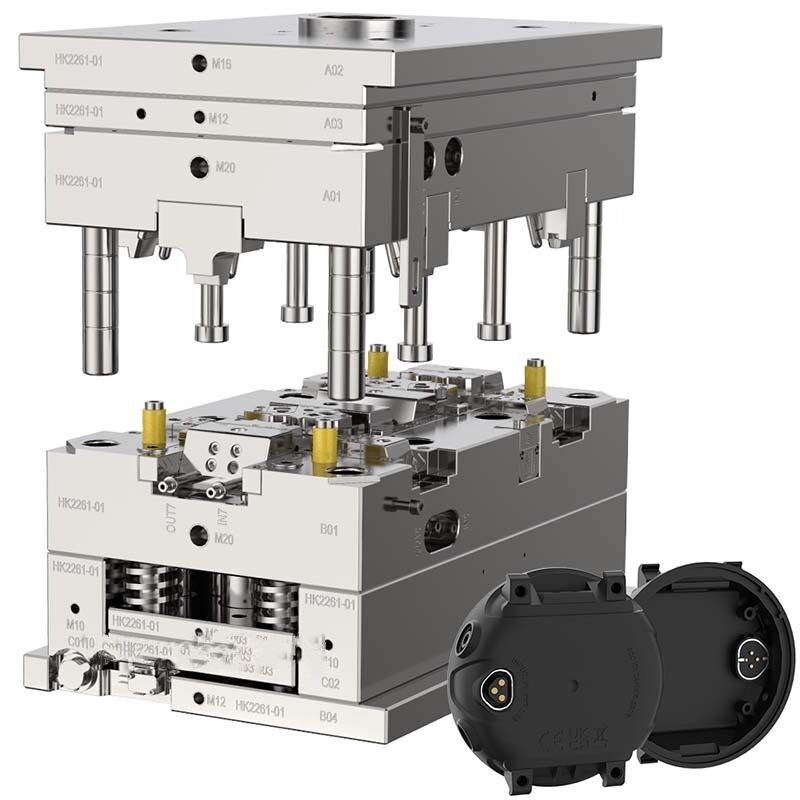Injection molding is a process that produces parts in large quantities, and it can basically give you as many identical parts as you want. This particular method stands out with regards to using less time in manufacturing goods by injecting through moulds, allowing the molten material inside it and making them cool down which eventually lead all those required materials into a neat final product. Yet for manufacturers, there is a significant challenge to achieving high-quality output. Thereby, it becomes supremely necessary for them to improvise on the process of injection mold and deliver veracious products each time.
Improving Injection Mold Efficiency for Production in Volume
Injection molding is a manufacturing process that requires efficiency and productivity. The aim is to develop top-class products and yet produce more output at the same time. In order for high-volume output to be maintained without compromising quality, a few key strategies can (and should) get employed.
Adopt Automation: The automation is one of the very crucial thing which increases productivity in injection molding. This helps manufacturers save time on production, reduce waste and provide better quality control which allows them to offer a higher-quality product faster.
Upgraded Mold Design: Progressive improvements in the mold design are necessary for a top-tier injection mold procedure. By evolving mold design over time manufacturers can achieve higher production yield, shorter cycle times and less material waste.
Implementing Maintenance Procedures: It is important to regularly maintain injection molding equipment and molds in order for process optimization. The benefits: Less unplanned downtime, less risk of equipment failure and longer operating life for your machines and molds.
Meaningful OQ and VQ Protocols for High-Quality Injection Molding Operations
One of the main goals in injection molding is to produce top-quality output. Quality control is fundamental to maintaining consistent levels of outcomes within injection molding. Some of the strategies that manufacturers can adopt to exercise quality control.
Quality Assurance: The large amounts of data produced during the injection molding process must be tracked to maintain quality. Keep an eye on factors such as material flow rate, cooling rate and fill time over the molding cycle that might give enable you to spot some problems before they slow production.
Documenting Best Practices: Documentation is important to help with consistency in quality control efforts and best practices. Manufacturers who document critical process parameters, tolerances and associated troubleshooting can provide valuable insights into their team that influences outcomes positively.
Performing Standard Quality Inspections: Oftentimes, defects and inconsistencies can be found at the end of production so it is important to ensure that quality inspections are taken place right after completion. These inspections may also include non-destructive testing techniques, such as X-ray or ultrasonic inspection in addition to visual observations.
The All-New Injection Mold performed Precision Accuracy Enhanced by Innovation
Utilizing state-of-the-art technologies can enhance precision, accuracy, and efficiency of the injection mold process. Examples of advanced injection mold technologies Include:
Real Time Monitoring : With Real-Time monitoring functionality, you can get a result of regular one or more time periods if the processing conditions are out of original context. This technology helps reducing defects and increase final product quality.
Mold Flow Analysis: Mold Transition analysis is a process simulation tool that allow the manufacturer to judge filling, packing and cooling of an injection mold process prior the production really occurs. It assists in discovering any possible design problems early on that can eventually end up saving development time and costs.
Additive Manufacturing - Additive manufacturing is a rapidly emerging technology that enables molds and components to be produced with complex geometries/ features in significantly less lead time. This technology provides for quicker turnaround times and more agility.
Read This Before Optimize Injection Mold Processes: The Importance of Mold Design For Top Quality Output
Mold design - The designing of a mold, which basically defines all the settings necessary for an optimized injection mold function that results in high-quality production output. 3 values to assess mold design
Selection of Material: The type of material also plays an important part in the formulation and design structure for any kindcasting. The choice of materials should consider factors such as temperature resistance, wear-resisting and impact resistance so that the mold runs in a low-wear state to ensure product quality.
Venting & Cooling Systems- Proper venting and cooling systems are essential to maintain the quality standards at optimum level as well as make sure we have lesser cycle times. Correct venting is essential for the elimination of trapped air during filling and efficient cooling helps to achieve fast solidification in the mold leading to cycle time reductions.
The surface finishing: Surface finish is a very important part of mold design since the end product this texture will imply the kind of final product. Manufacturers should make sure that the surface finish of mold is consistent with those for finished product to reduce remove finishing cost, after molding.
Strengthening Productivity and Profit Margins of Streamlined Injection Mold Processes
By optimizing processes, manufacturers can enjoy higher productivity levels and better-quality products with cost savings. Streamlining the Process of Injection Mold:Following are few advantages that can be observed by streamlining(streamline) the process of injection mold.
Decreased cycle times: Improving the flow of injection molding shortens the time you require for manufacture more than one part, effectively reducing both costs and production lead times.
Lower Downtime - By taking the time to streamline, you remove any bottlenecks in your injection mold process and eliminate downtime for increased uptime that can lead to greater productivity.
Better Quality: Making quality control processes more efficient can lead to improved, higher-quality outcomes with fewer waste errors and defect rates.
Ultimately, are necessary practices to implement in an injection mold process if consistently producing high-quality results is the goal. Yield, efficiency and quality controlManufacturers have to be able to constantly refine their processes in order to push yield higher, optimize speed of production lines or make sure that the product comes out perfect. With the aid of new technologies, simplification in injection mold operations and improvement on molds design is an approach for getting high-quality products which also increases productivity.





 ONLINE
ONLINE